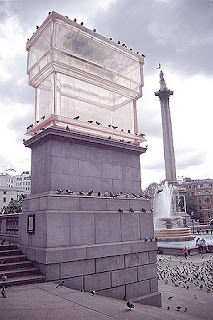The 16/17th century Spanish painter Juan Sánchez Cotán (1560 – 1627) often set his still-lifes against a velvety black backdrop. This blackness, rendered lusciously in oil paint, takes on a sort of metaphysical quality in his paintings. As if the darkness is ready to absorb the last bits of life out of his nearly or freshly dead objects. More information about this artist can be found here: http://en.wikipedia.org/wiki/Juan_Sánchez_Cotán
The contemporary artist Rachel Whiteread (b. 1963) also uses negative space to great effect. As a sculptor, she renders negative space as three dimensional form. She uses the technique of casting, to create positive forms from negative space. For Whiteread, the rendering of negative space into solid forms is like bringing ghosts into the light. She uses negative space for its poetic associations, such as emptiness, loss and memory. More about Rachel Whiteread http://en.wikipedia.org/wiki/Rachel_Whiteread
 |
| "House" 1993 Whiteread cast the entire interior space of a house in London. |
 |
| Holocaust Monument a.k.a. Nameless Library (2000), Vienna |
 |
| Inverted Plinth, 2001 |
Negative Space in the Garden http://berlindrawingroom.blogspot.de/2012/07/negative-space-in-garden.html


